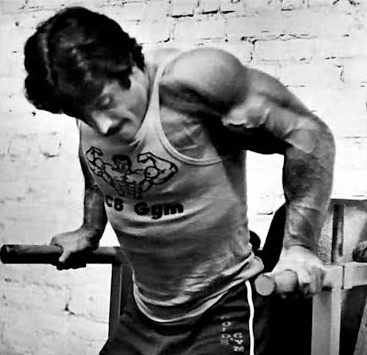Home | Articles | Book | Video | Training
Click Here to Sign Up for Your Free High Intensity Training Magazine Subscription
Mike Mentzer Negative Reps Training
Unleashing the Power of Eccentric Contractions
In the world of strength training, various techniques and methodologies have emerged over time to maximize muscle growth and strength gains. One such approach that has gained popularity among fitness enthusiasts is negative reps training, popularized by the late bodybuilder Mike Mentzer. Through this training method, individuals focus on the eccentric phase of the lift, which offers unique benefits for muscle development and overall performance. In this comprehensive guide, we will delve into the concept of negatives, the advantages they offer, and how to effectively incorporate them after reaching positive failure.
What Are Negative Reps?
Negative reps, also known as eccentric reps, involve intentionally emphasizing the lengthening phase of a movement. During a typical resistance exercise, muscles contract concentrically (shortening phase) and eccentrically (lengthening phase). While both phases are critical for building strength and muscle, the eccentric phase is often neglected since it is less glamorous. However, negative reps training hones in on the eccentric portion to stimulate greater muscle growth and strength gains.
Benefits of Negative Reps
1. Increased Muscle Fiber Recruitment: Negative reps allow for greater recruitment of muscle fibers than traditional training methods. In the eccentric phase, more force is generated, leading to greater muscle activation and subsequent hypertrophy.
2. Enhanced Muscle Damage: Eccentric contractions cause micro-tears in muscle fibers, leading to the release of growth factors that stimulate muscle repair and growth. Negative reps maximize this muscle damage, helping to accelerate the growth process and improve muscle hypertrophy.
3. Strength Gains: Negative reps are particularly effective in building strength due to the increased force production during the eccentric phase. The ability to handle heavier loads during the eccentric portion of the lift improves overall strength and facilitates progress in subsequent workouts.
4. Time Under Tension: By prolonging the eccentric part of the movement, negative reps amplify the time under tension (TUT). This TUT elicits a greater metabolic response, stimulating muscle growth and conditioning.
How To Do Negative Reps
1. Reach Positive Failure: Before incorporating negative reps, it is crucial to reach positive failure during your regular training. Positive failure occurs when you are unable to perform another concentric repetition with proper form. This ensures that you have exhausted your muscles and are ready to continue with negative reps.
3. Controlled Eccentric Phase: As you transition into the eccentric phase, aim for a slow and controlled descent, typically lasting between 6 to 8 seconds. Focus on maintaining proper form and maximizing muscle tension during this phase.
4. Positive Assistance: In order to return to the starting position after the eccentric phase, you may require assistance from a spotter or appropriate equipment. Once in the starting position, repeat the concentric phase without assistance and then proceed to the next repetition.
5. Repetitions and Training Volume: When performing negative reps, it is recommended to aim for a lower number of repetitions (e.g., 2-4) and sets (e.g., only 1 set per exercise). Since negative reps are more demanding on the muscles, it is essential to prioritize quality over quantity and allow sufficient recovery time between workouts.
If you have any questions about Mike Mentzer, Heavy Duty, High Intensity Training, Diet, etc. email us and we'll get back to you with an answer as soon as we can.
Click Here to Sign Up for Your Free High Intensity Training Magazine Subscription
Home | Articles | Book | Video | Training

Mike Mentzer Mr. America and Mr. Universe
